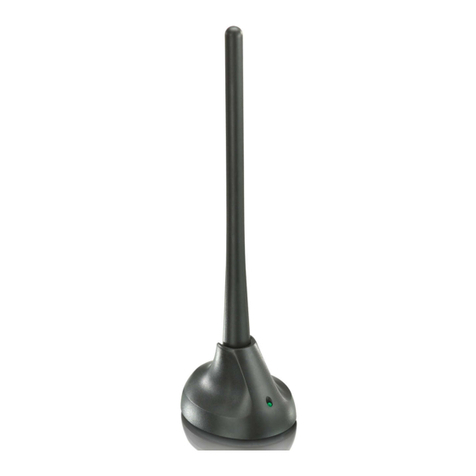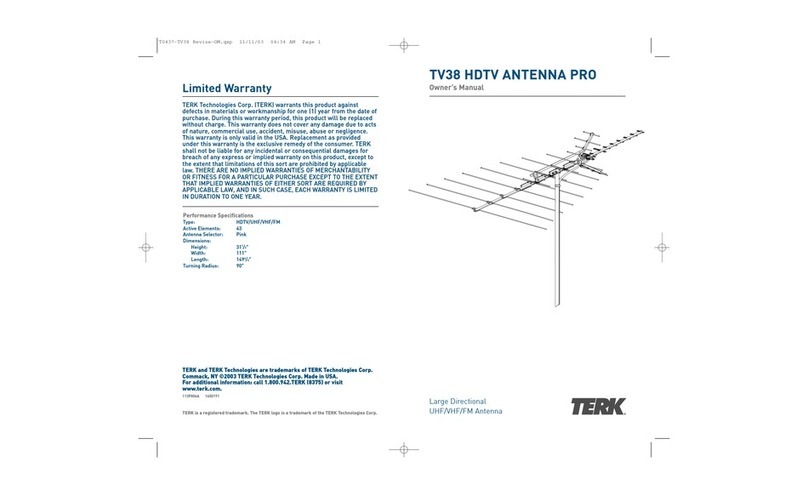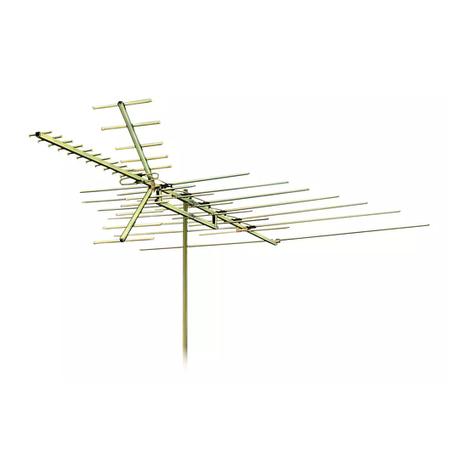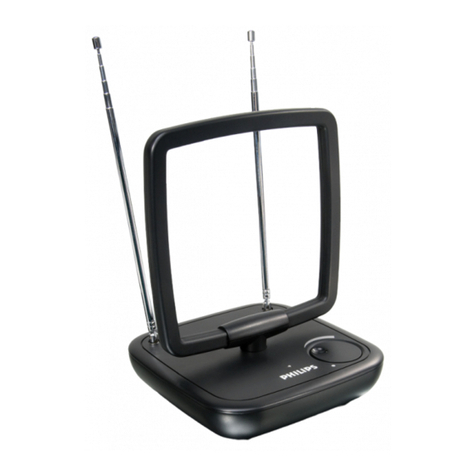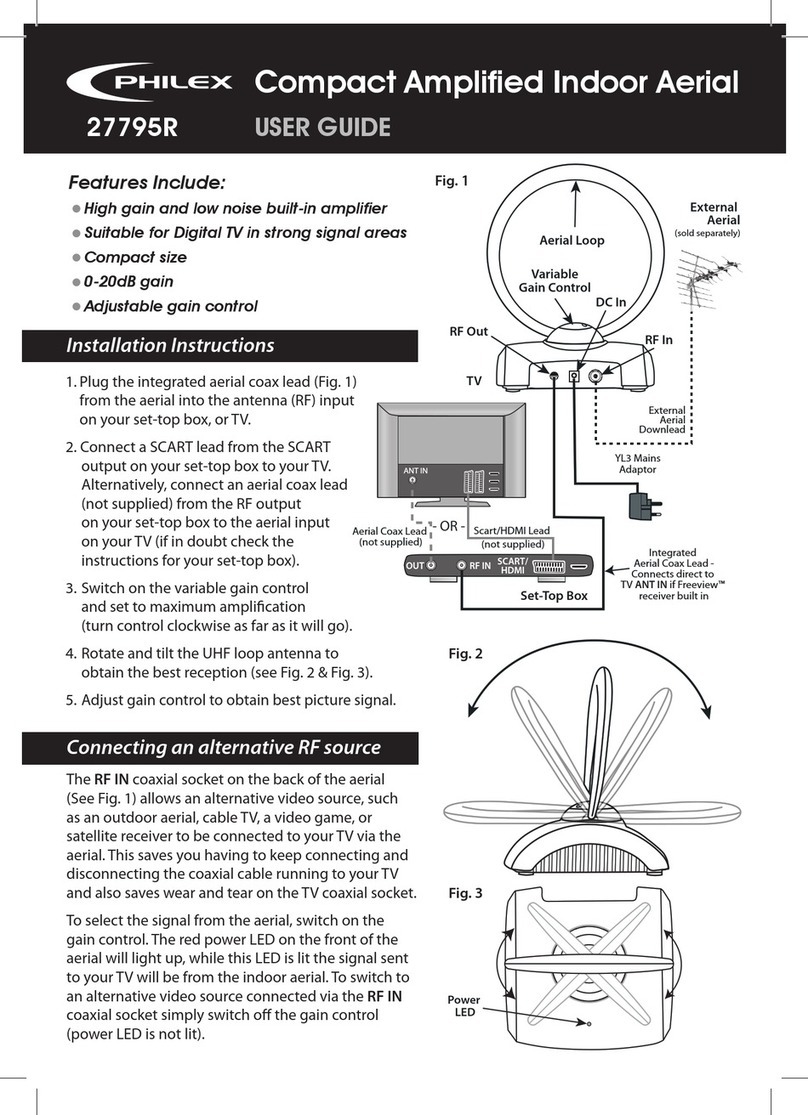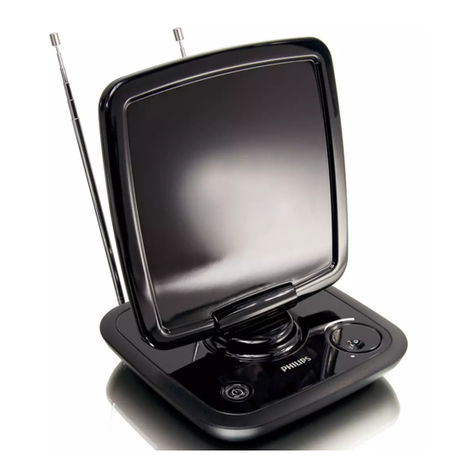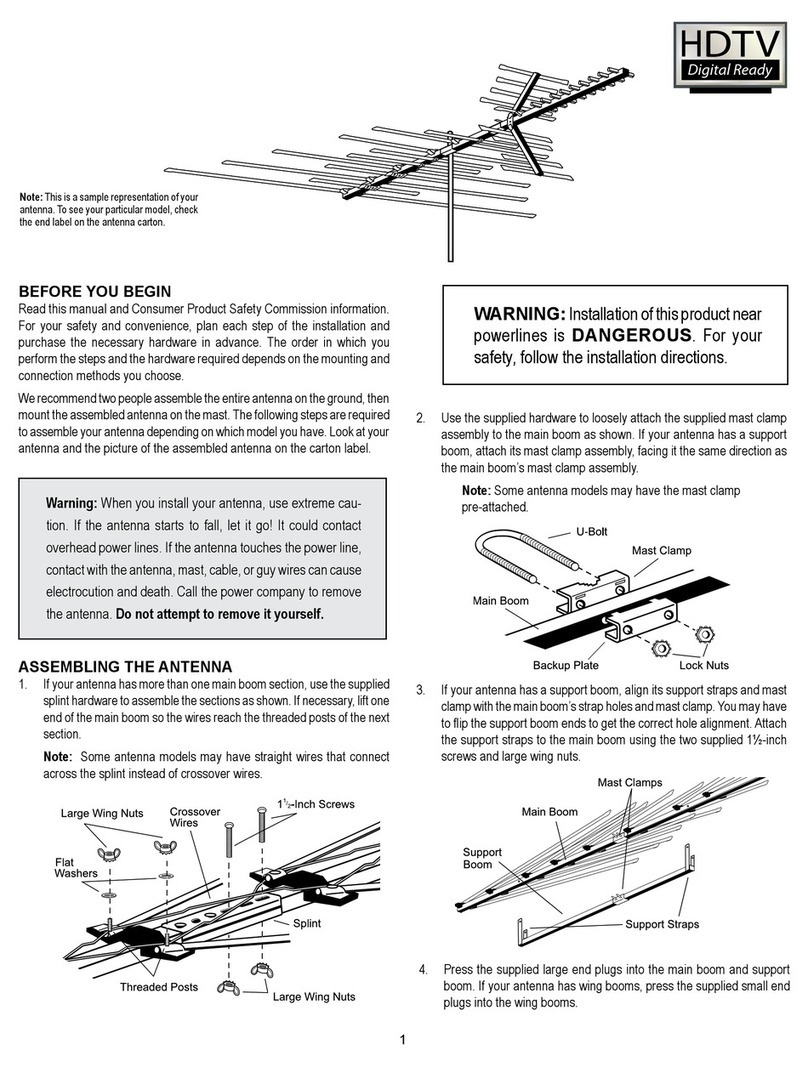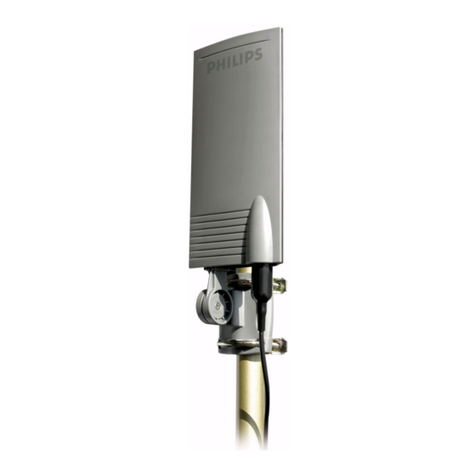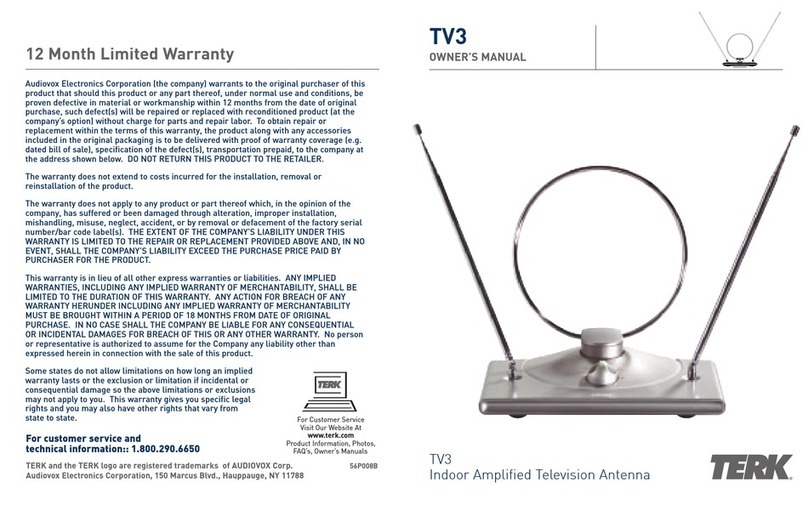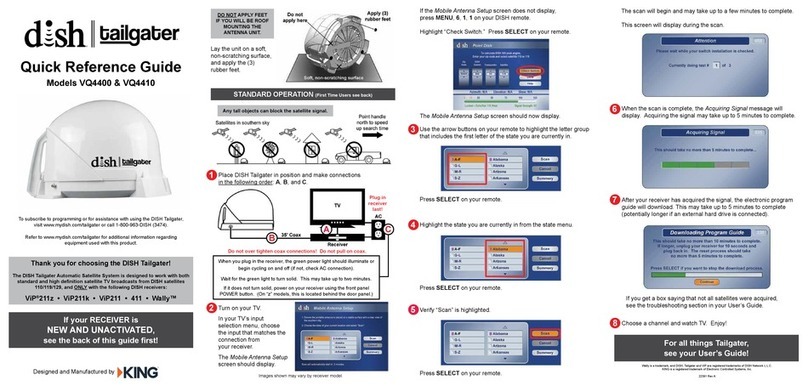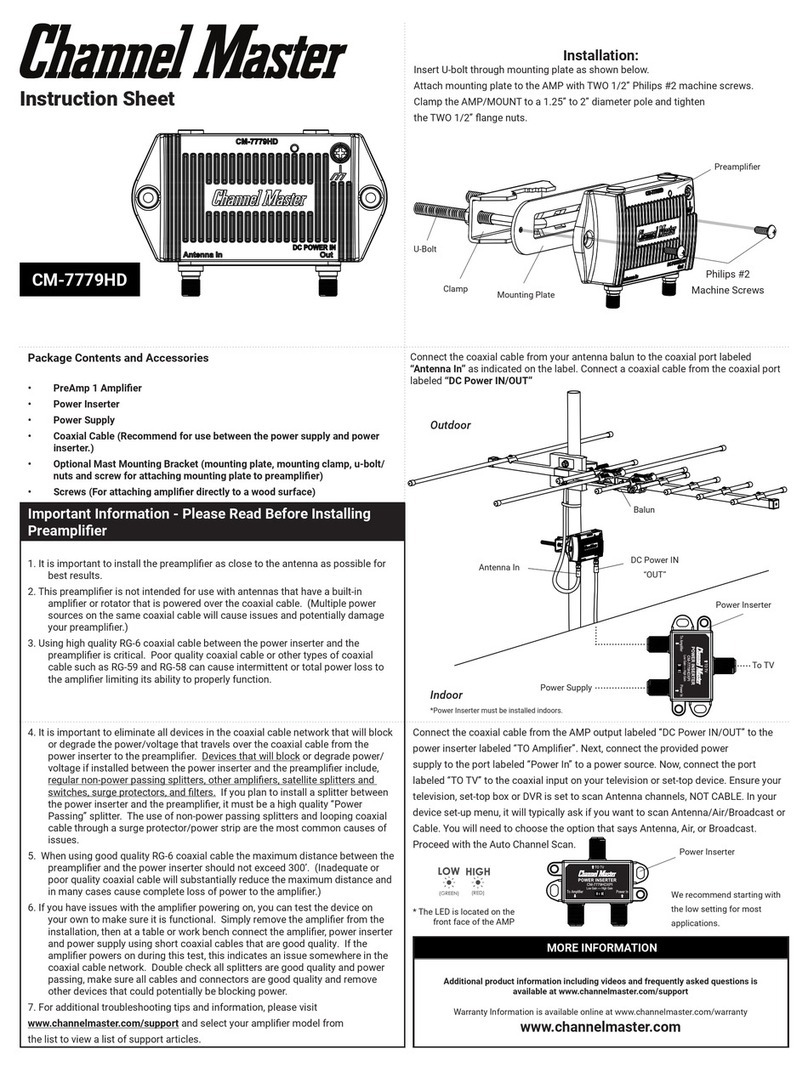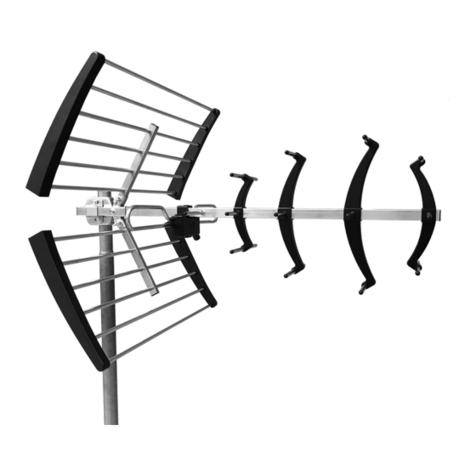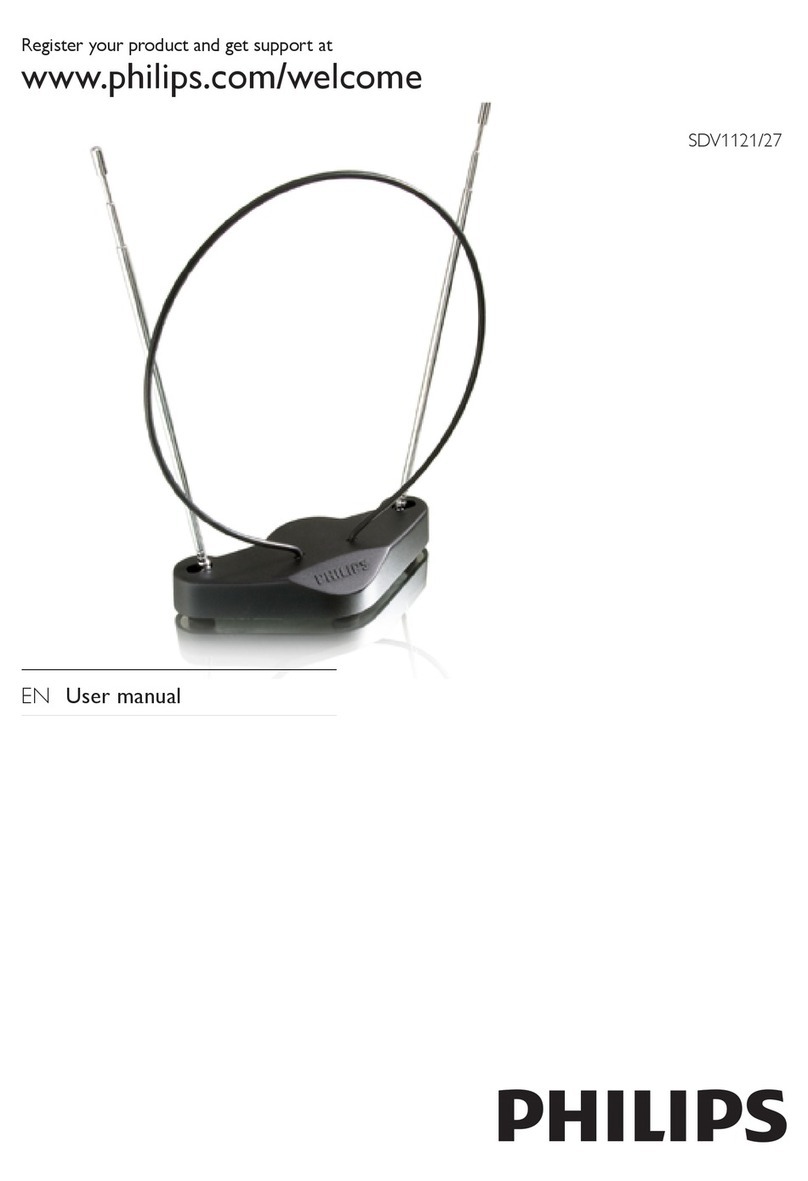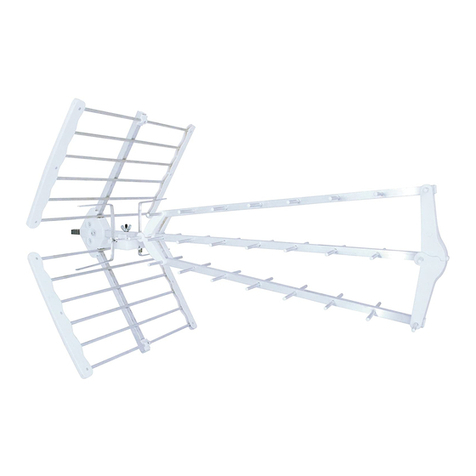Thrane&Thrane sailor 90 User manual

i
SAILOR 90 Satellite TV Antenna
INSTALLATION MANUAL

ii
SAILOR Satellite TV Antenna
Installation and maintenance manual
SAILOR 90 satellite TV antenna including
Above Deck Unit TT-3055A and Antenna Control Unit TT-3057A

iii
Disclaimer:Disclaimer:
Disclaimer:Disclaimer:
Disclaimer:
Any responsibility or liability for loss or damage in connection with the use of this
product and the accompanying documentation is disclaimed byThrane & Thrane. The
information in this manual is provided for information purposes only, is subject to
change without notice and may contain errors orinaccuracies.
Manuals issued by Thrane & Thrane are periodically revised and updated. Anyone
relying on this information should acquire the most current version e.g. from the
Thrane & Thrane Extranet at http://extranet.thrane.com.
Thrane & Thrane is not responsible for the content or accuracy of any translations or
reproductions, in whole or in part, of this manual from any other source.

iv

v
TT
TT
Table of Cable of C
able of Cable of C
able of Conon
onon
ontt
tt
tenen
enen
entt
tt
tss
ss
s
Chapter 1Chapter 1
Chapter 1Chapter 1
Chapter 1 GenerGener
GenerGener
Generalal
alal
al inin
inin
inff
ff
foror
oror
ormm
mm
matat
atat
atii
ii
ionon
onon
on
Satellite TV reception, general information, footprints ...........................1
Chapter 2Chapter 2
Chapter 2Chapter 2
Chapter 2 Functional descriptionFunctional description
Functional descriptionFunctional description
Functional description
Description of operation ..................................................................... 6
Calibration ........................................................................................ 6
Satellite search ................................................................................. 6
Tracking ............................................................................................ 7
Satellite identification ........................................................................ 7
Polarisation control ........................................................................... 9
Chapter 3Chapter 3
Chapter 3Chapter 3
Chapter 3 InstallationInstallation
InstallationInstallation
Installation
Antenna location .............................................................................. 11
Mounting......................................................................................... 13
Connections ..................................................................................... 14
SAILOR 90 pedestal mounting ........................................................... 15
Radome cable wiring ........................................................................ 17
Control unit connection ..................................................................... 19
Choice of tracking and ID-receiver signals ......................................... 20
Alignment of heading indicator ......................................................... 20
Obscured sectors.............................................................................. 21
Start-up procedure .......................................................................... 21
Chapter 4Chapter 4
Chapter 4Chapter 4
Chapter 4 OperOper
OperOper
Operatat
atat
atii
ii
ionon
onon
on
Normal use .................................................................................... 22
Menus............................................................................................ 22
Special functions ............................................................................. 22

vi
Table of Contents
Chapter 5Chapter 5
Chapter 5Chapter 5
Chapter 5 PP
PP
PCC
CC
Cprpr
prpr
proo
oo
ogrgr
grgr
gram, mam, m
am, mam, m
am, maa
aa
ainin
inin
intata
tata
tainin
inin
ining NID-tableing NID-table
ing NID-tableing NID-table
ing NID-tabless
ss
s
PC software installation .................................................................... 26
Main menu ...................................................................................... 31
Service menu .................................................................................. 32
Calibration menu ............................................................................. 33
Conical scan menu .......................................................................... 34
Log menu ....................................................................................... 34
Satellite menu................................................................................. 35
Satellite identification menu ............................................................. 36
NID-tables ...................................................................................... 37
Antenna program update .................................................................. 41
Chapter 6Chapter 6
Chapter 6Chapter 6
Chapter 6 SerSer
SerSer
Servv
vv
vicic
icic
icee
ee
e, mec, mec
, mec, mec
, mechh
hh
hanan
anan
anicic
icic
ical dral dr
al dral dr
al draa
aa
aww
ww
winging
inging
ingss
ss
s
Service and repair ........................................................................... 43
Replacing CPU................................................................................. 44
Replacing IMU ................................................................................ 45
Replacing LNB ................................................................................ 46
Replacing elevation motor belt ......................................................... 47
Replacing elevation motor ............................................................... 48
Replacing azimuth motor belt .......................................................... 49
Replacing azimuth motor ................................................................. 49
Replacing polarisation motor ........................................................... 50
Replacing polarisation motor belt ..................................................... 50
Replacing RG179 coaxial connectors .................................................. 51
Chapter 7Chapter 7
Chapter 7Chapter 7
Chapter 7 TT
TT
Trr
rr
roubleouble
oubleouble
oubleshootshoot
shootshoot
shootinging
inging
ing
Error codes ..................................................................................... 52
Troubleshooting chart ...................................................................... 53
Chapter 8Chapter 8
Chapter 8Chapter 8
Chapter 8 TT
TT
Tecec
ecec
echnhn
hnhn
hnicic
icic
ical specifal specif
al specifal specif
al specificic
icic
icatat
atat
atii
ii
ionon
onon
on
SAILOR 90 satellite TV antenna ........................................................ 54
Chapter 9Chapter 9
Chapter 9Chapter 9
Chapter 9 Approvals ....................................................................................... 56

1
Chapter 1
System Units
General information
Satellite TV reception, general information, footprints
Satellite orbits
All TV-satellites move in so called geostationary orbit 36.000 km above the
Earth's equator. At this specific altitude their angular velocity matches the
Earth's exactly and make them appear motionless in the sky.
When viewed from the northern hemisphere the satellites appear along an arch
with the satellite due south at the top.
The necessary separation between satellites depends on the frequency and the
size of the antennas and is usually 3°. A large number of satellites can be co-
located in the same position as long as
they transmit on different frequencies.
Co-located satellites are allowed to
deviate 0,1 degrees within their position,
which equals to a cube with a side of 73
km. At position 19.2 deg East (Astra 1) for
instance, there are actually 5 satellites
within the same position.
The satellites get their signals from an
uplink station. The satellite that
receives the signal shifts the
frequency down to about 10-
12 GHz, amplifies it and
transmits it back towards
earth by what is called
transponders. The satellites
electrical power comes from solar
panels, and the satellite is kept in
position by small jet-motors mastered
by ground-control. The actual life-span
of a satellite mainly depends on fuel
left for positioning jets.

2
Chapter 1: General information
Antenna and LNB
Transponders
TV-satellitesthatcanbeviewedwithSatelliteantennastransmitintheKufrequency
bandon frequencies between 10.700 and 12.750 MHz. Each satellite typically has
severaltransmitters ortransponders thatcarrya numberof digitalTVand/orradio
channels.
Antenna and LNB
Whenthe signalsreachthe antennathey arefocusedby thedishandradiatedinto
the feedhorn and passed along to the LNB (Low Noise Block converter). The LNB
amplifiesthesignalsandtransformsthemtoalowerfrequency withintheso-called
satellite IF-band. Satellite receivers use the IF band which covers 950-2150 MHz
(2300 MHz in some areas).
Sincethe Ku-bandcovers 2050MHz andtheIF-bandonly1200MHz,it isnecessary
todividetheincomingsignalsintoahighbandandalowbandwithseparateoutputs
on the LNB. Low-band IF-signals are shifted 9750 MHz down and high-band IF-
signals10600 MHzdown.

3
Polarisation
In order to increase the number of channels in each satellite slot the signals are
transmitted with different polarisation. Two kinds of polarisation are used in TV
transmissions:linearandcircular.
Linearlypolarisedsignalspropagatewiththeirwavefrontsalignedeitherhorizontally
orvertically.ThereceivingLNBcanthenseparatethetwopolarisationsifitisaligned
properly.
Circularlypolarisedsignalspropagatewiththeirwavefrontsrotatingeitherclockwise
orcounter-clockwise
Themainadvantagewithlinearpolarisationovercircularisthattheisolationbetween
thetwomodes is better. The mainadvantagewithcircular polarisation is that the
feedhorndoesn't needtobe aligned.
Chapter 1: General information
Polarisation

4
Footprints
The satellite footprint is a map showing a satellite’s fieldstrength or EIRP
(Effective Isotopic Radiated Power). It's not a real unit, but more a practical
model you can use when you graphically view the radiated area.
Every satellite has it's own footprint, and by consulting the footprints and the
conversion table you can estimate the antenna size needed.
One satellite can transmit several beams, where every beam has it's own
footprint and content regarding channels and service providers.
For updated information regarding footprints, frequencies, service providers etc.
we recommend you to consult websites such as www.lyngsat.com,
www.satbeam.com or www.kingofsat.net.
Below you can see a few typical footprints Anik F1R (W107,3), Astra 1H (E28,2)
and NSS6 (E95,0)
Chapter 1: General information
Footprints
Anik F1R Ku band
EIRP
(dBW)
>50
50
49
48
47
46
45
44
43
42
41
40
39
38
37
36
35
34
33

5
Footprints
Astra 1H
NSS 6 Ku band
EIRP
(dBW)
>50
50
49
48
47
46
45
44
43
42
41
40
39
38
37
36
35
34
33

6
Functional description
Description of operation
Afterpower-up,thesatelliteTV antennaperformsaself-testand calibrationlasting
uptofiveminutes.Itthenenterssearchmodeandstartssearchingforasatellite.The
antennaautomaticallycalculatestheelevationoftheselectedsatelliteusingabuilt-
inGPS-receiver todetermine thecurrentposition1.
Afterlockingonasatellite,theID-receiverattemptstoidentify itandrepositionsthe
antenna if necessary. Polarisation is adjusted automatically when a satellite is
identified.
ForamoredetailedexplanationasatelliteidentificationseesectionssatelliteIDand
satelliteID menu
Calibration
Polarotor turns to counter clockwise mechanical end stop (seen from behind)
Elevation goes down to mechanical end stop
Azimuth turns to counter clockwise mechanical end stop
Elevation goes up then down (test of elevation gyro)
Azimuth goes clockwise-counter clockwise (test of azimuth gyro)
Elevation goes up to 90 degrees (test of inclinometer)
Antenna makes a 45 degree clockwise sweep
Antenna makes a counter clockwise noise sample sweep
After this it goes into search mode, trying to locate a satellite
Satellite search
Twosearchpatternsareused.Thelargepatternisusedwhennoinformationisknown
about the satellite positions. The antenna then moves in full circles at different
elevation angles. The small pattern is used to reacquire a satellite after loss of
tracking.
Ifthedefaulttrackingmode(Auto)isset inthe SatID-menuthen thesearch ismade
witha signaldetector thatreceivessignalsfromaselectablepart ofthesatelliteIF-
band.
Chapter 2
Functionaldescription
1If the antenna has been switched off for a long time, the GPS-receiver may take
up to 20 minutes to initiate. It may then be necessary to enter the ship's position
manually in the service menu.

7
Insomecircumstancesitcanbeusefultocarryoutthe
search using the tuner - the Tuner Tracking Mode.
The antenna will then only lock on a satellite
transmittinga DVB-Ssignal onthe presetfrequency
withacertainsymbolrateandFEC.Thesesettingsare
availablefromthePC-programonly.
Tracking
When the signal level exceeds the threshold level during a search, tracking is
initiated.Theantennathenusesacombinationofgyroscopesanddishscantokeep
itpointed atthesatellite.
Thedish scancontinuouslyrotates theantennain asmallangle arounditsaiming
pointtocorrectforgyroscopedrift.Thesignalismonitoredeitherwithatunersetto
a specific frequency or with a signal detector via a bandpass filter. See section
Trackingmode
SignalsfromtwoofthefourLNBoutputsaretappedoffandonefedtothetunerand
theother tothedetector. Verticallow isthedefault LNBoutputfor thedetector and
horizontalhighfortheSatID.
Satellite identification
After locking on a satellite the ID-receiver attempts to identify it by matching the
transponder's networkidentifier code or NID with the antenna's internal list.
If the identified satellite is another one than selected, the correct position is
calculated and the antenna automatically repositioned. When a correct match is
made, "Confirmed" is written after the satellite name in the display.
Please see section Network IDs.
If the satellite remains unidentified, the satellite TVantenna tries to acquire
another satellite.
Chapter2:Functionaldescription
Satellite identification

8Satellite identification
After identification polarisation is adjusted to match the satellite.
The angles are calculated based on the ship's position and the satellite's longitude
assuming a 0° angle in locations on the same longitude. Compensation for
ship´s movements is also performed continuously.
As some satellite’s polarisation is offset, a provision is made to fine-tune it in the SatID
menu of the PC-program.

9
Polarisation control
DuringinitialNID-scanning,polarisationissetto0°. Ifnoidentificationismade,scans
are executed on -15° and 15° as well.
Ifthe satelliteremainsunidentified, theantennatries toacquireanother satellite.
Chapter2:Functionaldescription
Polarisation control

10
Chapter2:Functionaldescription

11
Chapter 3
Installation
Installation
Antenna location
Choosea locationthat hasanunhinderedviewofthesatellite atthe pointoflowest
elevation. Ideally, a location should be chosen as close to the vessel's centre as
possiblewhile keepingcablelengths to aminimum.
If the antenna is placed on a pedestal, care must be taken that it does not flex
or vibrate.
Thesatellite TV antenna's LNBisequipped with aradarfilter but toavoiddamage
totheLNBitisstronglyadvisedthatitshouldnotbeplacedinthepathofaradarbeam.
Itmust not be placed in the path of a VSATantenna.
Installation

12 Installation
The satellite TV antenna must be mounted as far away as possible from ship’s
radar and high power radio transmitters, because they may
compromise the satellite TV antenna performance. RF emission from radars
might acually damage the satellite TV antenna.
Preferred placing
Avoid if possible
Min 20
o
d
Min 20
o
Radar
Itisdifficulttogiveexactguidelinesfortheminimumdistancebetweenaradarand
theantenna becauseradarpower, radiationpattern,frequency andpulselength/
shapevary fromradarto radar.Further,the antennaistypically placedinthe near
fieldof theradarantenna and reflectionsfrommasts, decksandother itemsinthe
vicinityof the radararedifferent fromshipto ship.
However, it is possible to give a few guidelines:
Sincea radarradiates afanbeamwithhorizontal beamwidthofafew degreesand
verticalbeamwidth ofupto+/-15o,theworstinterferencecanbeavoid bymounting
theantennaat adifferentlevel-meaningthattheantennaisinstalledminimum20o
aboveorbelowtheradarantenna. Duetonearfieldeffectsthebenefitofthisvertical
separationcould bereduced atshortdistance(belowapprox. 10m)betweenradar
antennaand satelliteTVantenna. Thereforeit isrecommendedto ensureasmuch
verticalseparationaspossiblewhenthesatelliteTVantennahastobeplacedclose
toa radarantenna.

13
Installation
Mounting
Rigidmounting isessentialfor properfunctionandpartsof thevesselsubject toheavy
resonantvibrationsareunsuitablefor satelliteTVantennainstallation.
If pedestals higher than 1 m are used utmost care must be taken to ensure rigidity and
thatthe naturalfrequency ofthepedestal/satellte TVantenna isashighaspossible.
Mountingbolts shouldbetightened witha torqueof20 Nm,andmediumorpermanent
strengththread-lockingfluidapplied.
Theminimum acceptable seperation(dmin.) betweenaradar andthesatellite TV
antennaisdeterminedbytheradarwavelength/frequencyandthepoweremittedby
the radar. The tables below show some “rule of thumb” minimum separation
distancesasa functionofradarpoweratXandSband.Ifthedmin. separationlisted
belowisapplied, antenna damageisnormalyavoided. “d min.” isdefinedasthe
shortestdistancebetween theradarantenna(inanyposition)andthe surfaceofthe
satelliteTVantenna.
Radar distance
Compass Safe DistanceCompass Safe Distance
Compass Safe DistanceCompass Safe Distance
Compass Safe Distance:1m

14
Connections
Threekinds of electricalconnectionsare tobemade during installation:
1. Power supply 24 V DC, min 5 A, 2 poles. A cable area of 0.75 mm2should
be used up to 25 m. Above 25 m 1.5mm2 is recommended.
2. Control box, 7 poles + shield
3. Four coaxial cables, cables to be marked with ”1”, ”2”, ”3” and ”4”
Chapter 3: Installation
SAILOR90pedestalmounting
For installtions 25 metres and below between satellite TV antenna and satellite
receiver a thinner type of 7 mm:s low loss cable can be used.
For example TELASS 100 or TELASS 110 (KTV1.1/4.9 CV).
For more information regarding these cables please visit
www.coferro.dk
www.bedea.com/pdf/breitband/BK2004_18%2B19
For installations exceeding 25 metres between satellite TV antenna and receiver
a thicker low loss cable must be used.
For example 75160AF or Coax 6. For more information regarding this type
of cable please visit www.belden.com
NOTE:Maximumloss between satellite TV antennaandSAT-receiver15 dB
F-splicer socket
Vulcanizing tape
Crimp F-connector for 7 mm coax type
TELASS 110: (KTV 1.1/4.9 CV)
Crimp F-connector for 10 mm coax type RG11 or
75160AF: B004, PPC-Denmark
Cable splicing
Table of contents
Other Thrane&Thrane TV Antenna manuals

